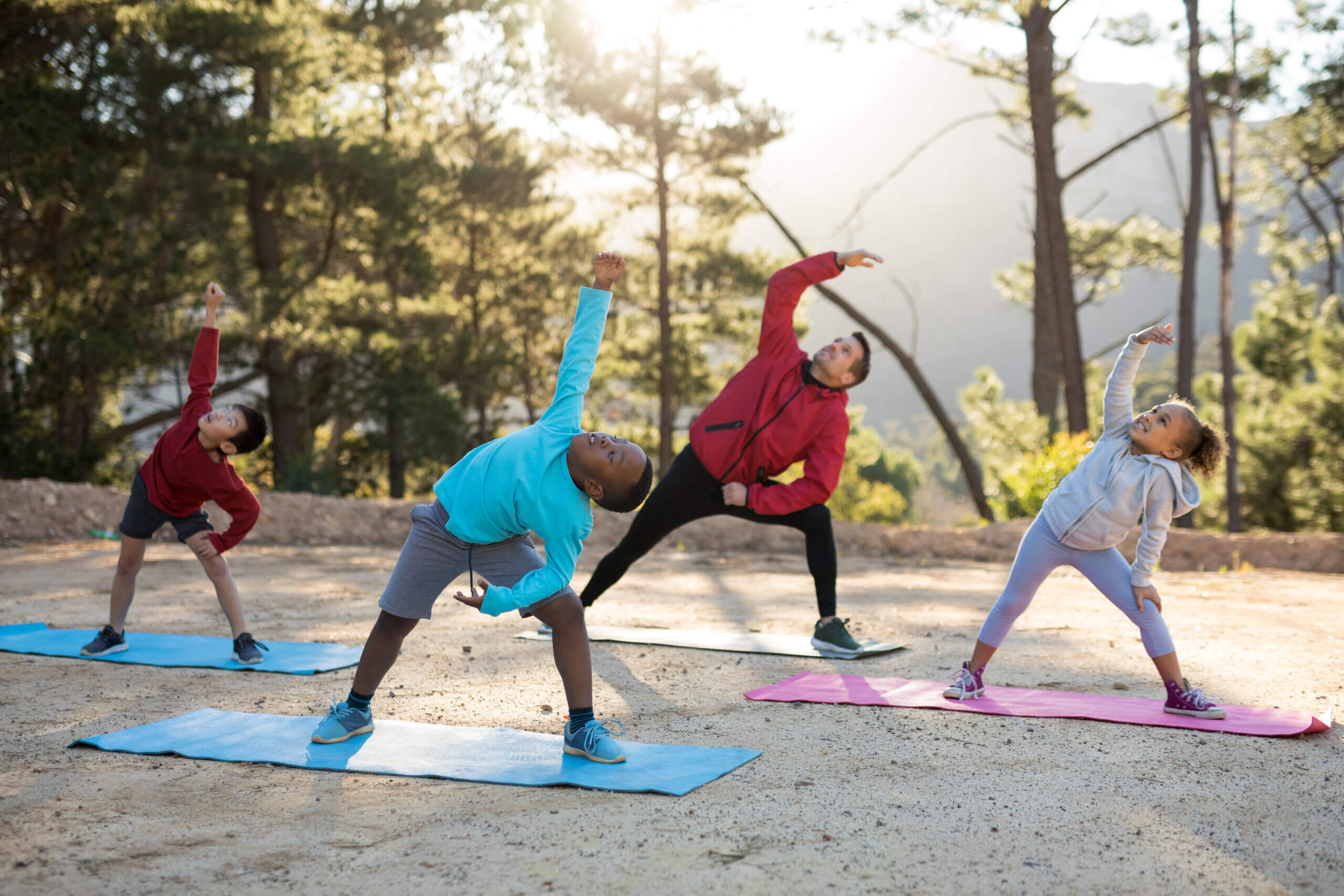Teaching yoga to kids can be a fun and rewarding experience that promotes physical health, mental well-being, and self-awareness. When combined with the benefits of being in nature, outdoor yoga can provide a unique and stimulating environment for learning and growth. This article will provide some tips for teaching kids yoga outside and making the most out of this experience.
Choosing a Suitable Location
The first step in teaching kids yoga outside is choosing a suitable location. It should be a safe, clean area with enough space for the kids to move freely. It should also provide some natural elements, such as fresh air, sunlight, and a scenic view. Some popular options include parks, beaches, and gardens. However, it is important to choose a location that is easily accessible and suitable for the age and ability level of the kids.
Preparing for the Weather
One of the main challenges of teaching kids yoga outside is dealing with the weather. Depending on the location and time of day, it can be too hot, cold, windy, or rainy. Therefore, it is essential to prepare for such conditions by checking the weather forecast beforehand and bringing appropriate gear, such as sunscreen, hats, sunglasses, jackets, blankets, and umbrellas. It is also important to have a backup plan in case of inclement weather or other unexpected events.
Adapting to the Environment
Another aspect of teaching kids yoga outside is adapting to the environment. Unlike indoor studios, outdoor locations can provide distractions and obstacles that may affect the practice, such as noise, insects, uneven surfaces, and limited equipment. Therefore, it is important to be flexible and creative in designing the class and adjusting as needed. For example, the instructor can incorporate natural elements into the practice, such as using tree branches as props or aligning the poses with the sunrise or sunset.
Engaging the Senses
Teaching yoga outside can also provide a unique opportunity to engage the senses and connect with nature. The instructor can enhance the kids’ awareness and relaxation by incorporating sensory experiences into the class, such as visualisations, aromatherapy, and soundscapes. For example, the instructor can guide the kids to visualise themselves as animals or use essential oils that evoke the scent of the surrounding plants. Using nature as a backdrop can provide a more immersive experience, and kids may find connecting with their inner selves easier.
Making it Fun and Interactive
Finally, teaching kids yoga outside should be a fun and interactive experience that promotes learning and creativity. The instructor can use games, songs, stories, and other interactive activities to engage the kids and make the class more enjoyable. For example, the instructor can lead a scavenger hunt to find natural objects or incorporate animal-themed poses and movements. By making the class fun and interactive, kids are more likely to stay engaged and motivated to continue practising yoga.
Conclusion
Teaching yoga to kids outside can be a fun and stimulating experience that promotes physical health, mental well-being, and self-awareness. By choosing a suitable location, preparing for the weather, adapting to the environment, engaging the senses, and making it fun and interactive, the instructor can create a memorable and effective practice that connects the kids with nature and themselves. Outdoor yoga can provide kids with a unique and enriching experience and may inspire them to continue practising yoga and exploring the natural world.
Join our children’s yoga training course and become a certified yoga instructor with Yogamoo today! Unlock your potential and make a positive impact on the lives of children through the power of yoga. Apply now and start your journey towards becoming a knowledgeable and skilled children’s yoga teacher.

Leave A Comment